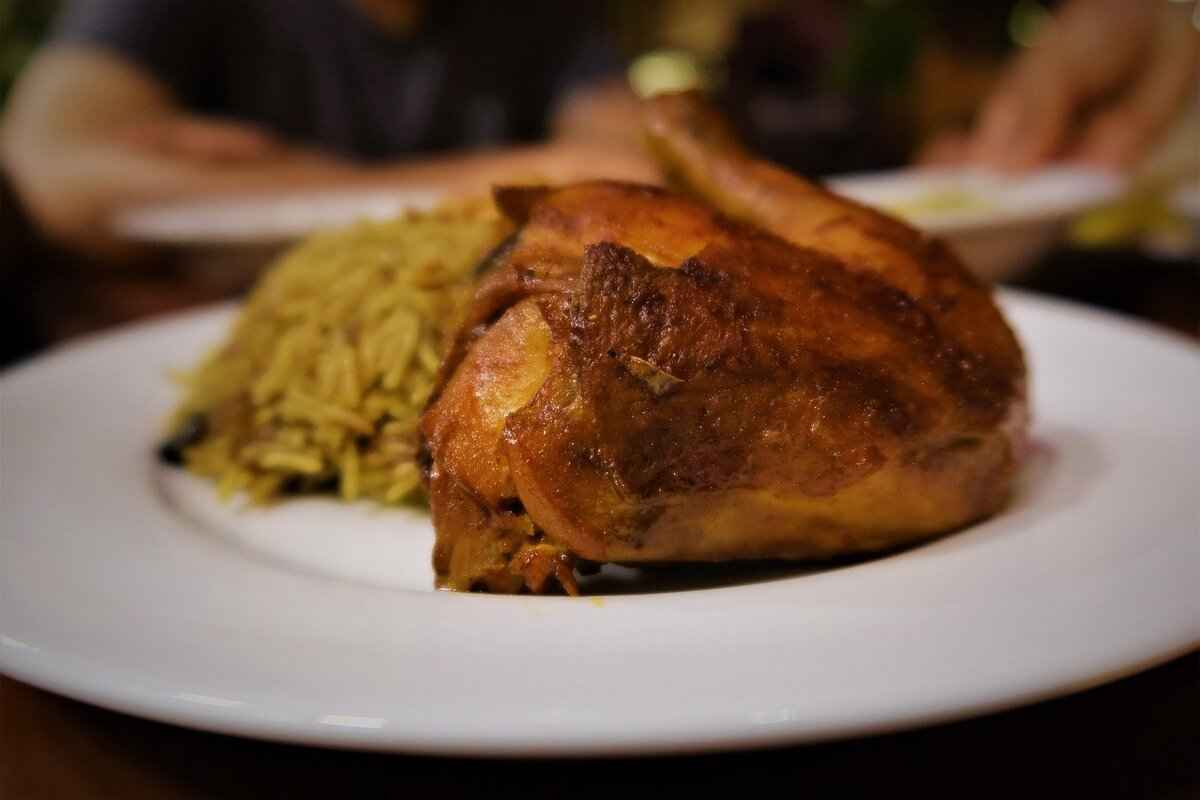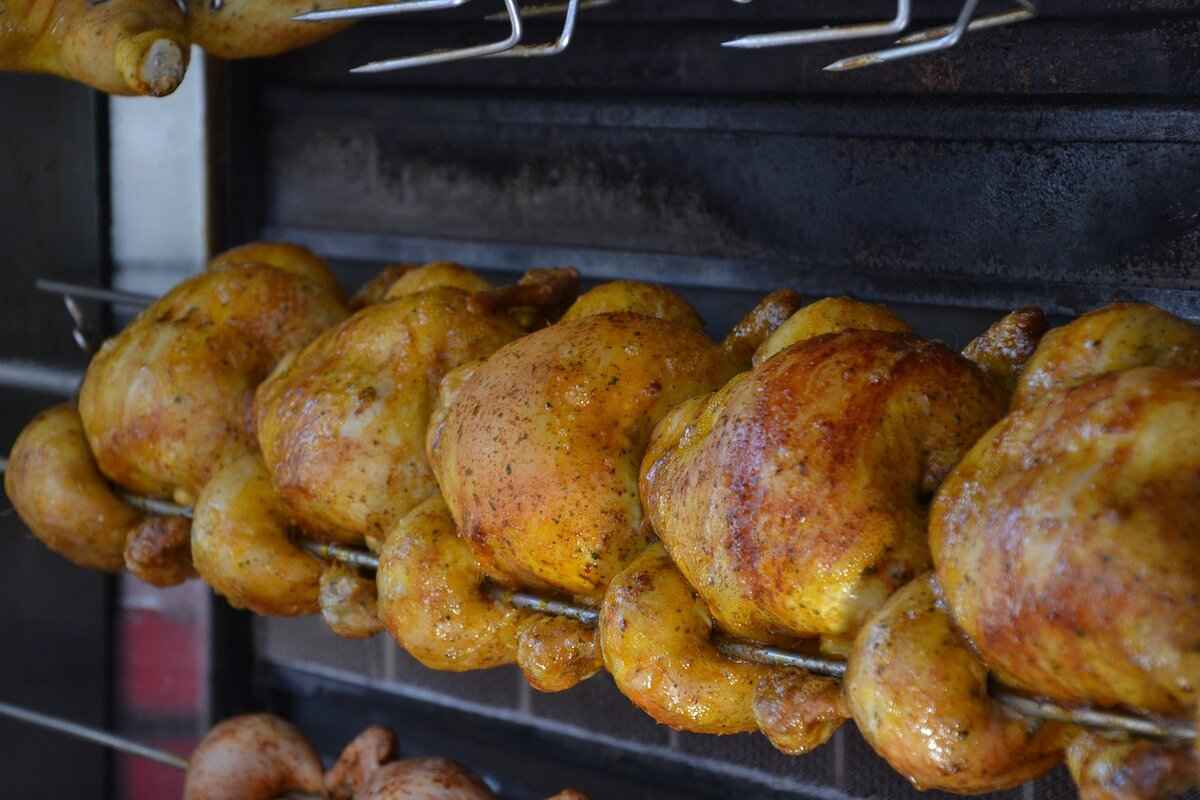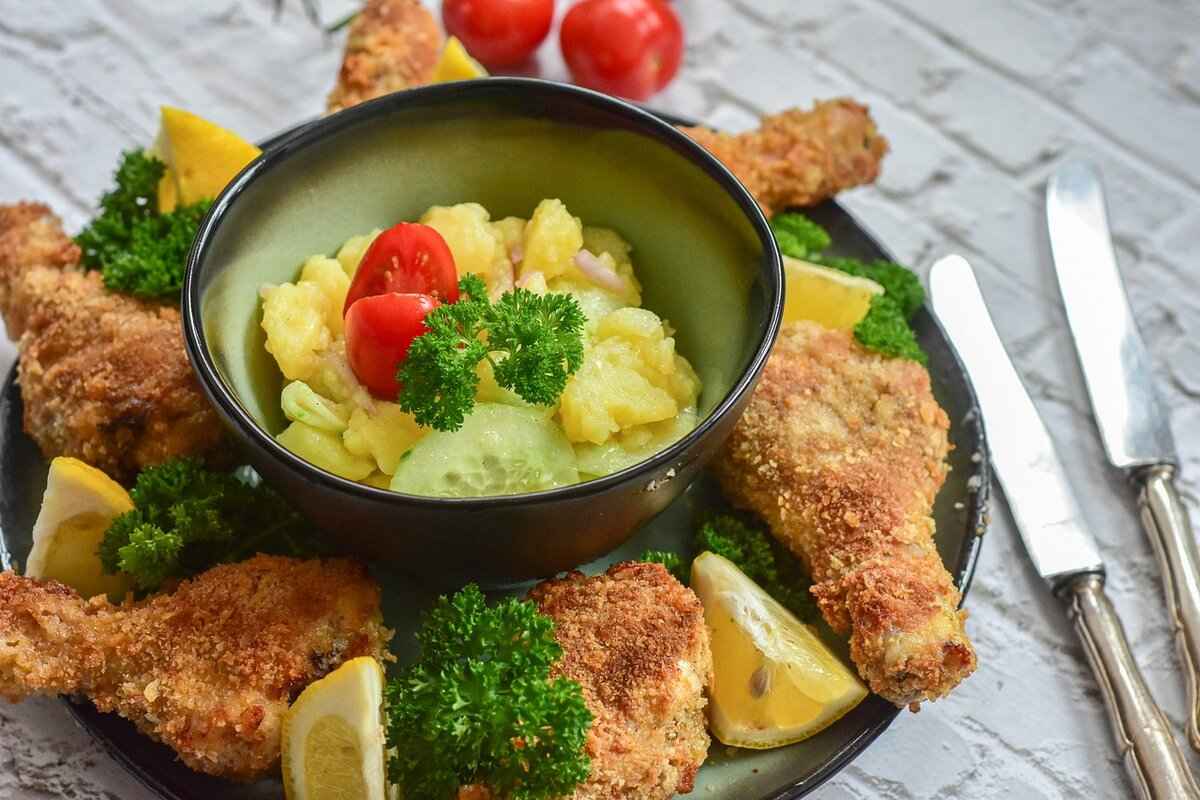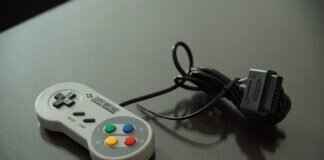This article explores essential strategies for keeping chickens comfortable during the hot summer months, ensuring their health and productivity. Discover practical tips and insights that every chicken owner should know.
Understanding Chicken Physiology in HeatChickens are warm-blooded animals, and their ability to regulate body temperature is limited. When temperatures rise, chickens can suffer from heat stress, which can lead to decreased egg production and even health issues. To effectively care for your flock, it’s vital to understand how they respond to heat. Chickens rely on behavioral adaptations, such as seeking shade and reducing activity during the hottest parts of the day, to manage their body temperature.
Providing Adequate Shade for ChickensCreating shaded areas in the chicken coop and run is crucial for preventing heat stress. Here are some effective methods to ensure your chickens have access to shade:
- Natural Shade Solutions: Planting trees or shrubs around the coop can offer natural shade. Consider using fast-growing varieties that provide ample coverage.
- Using Tarps and Canopies: If natural shade is limited, tarps and canopies can be effective alternatives. Ensure they are securely fastened and positioned to block direct sunlight.
- Strategic Coop Placement: The location of your chicken coop plays a significant role in temperature regulation. Position your coop in a way that maximizes shade and minimizes direct sunlight exposure.
Creating Ventilation in the CoopGood ventilation is essential for maintaining a cool environment inside the coop. Without proper airflow, humidity levels can rise, leading to discomfort for your chickens. Consider these methods to enhance ventilation:
- Windows and Vents: Install windows and vents at different heights to create cross-ventilation. This allows cooler air to enter while hot air escapes.
- Fans: Use fans to circulate air within the coop. Ceiling fans or box fans can help reduce temperatures significantly.
Hydration: The Key to Chicken ComfortAccess to fresh, cool water is vital for chickens during hot weather. Ensure your flock stays hydrated throughout the day by implementing these strategies:
- Watering Systems for Hot Weather: Implementing automatic watering systems can help maintain a consistent supply of cool water. These systems reduce the need for manual refilling and ensure that water remains fresh.
- Adding Ice to Waterers: Adding ice to waterers can provide immediate cooling relief. This simple trick can encourage chickens to drink more and stay hydrated.
Feeding Adjustments During SummerChickens’ dietary needs may change in the heat. Understanding how to adjust their feed can help maintain their health and productivity during hot months:
- Choosing Light-Weight Feeds: Switching to lighter feeds can reduce the metabolic heat produced by chickens. Look for feeds that are lower in protein during the summer months.
- Incorporating Hydrating Snacks: Adding fruits and vegetables can provide hydration and essential nutrients. Watermelon, cucumber, and leafy greens are excellent choices.
Monitoring Chicken Behavior for Heat StressObserving your chickens for signs of heat stress is crucial. Recognizing the symptoms early can help you take timely action to cool them down:
- Signs of Heat Stress: Look for symptoms such as panting, lethargy, and reduced feed intake. Chickens may also spread their wings and seek cooler areas.
- Behavioral Changes to Note: Changes in behavior during extreme heat can indicate discomfort. Monitor your flock closely to ensure their well-being.
Utilizing Fans and Misters in the CoopInstalling fans and misters can significantly improve the comfort level in the coop. These tools can create a more pleasant environment for your chickens:
- Choosing the Right Fan Type: Different types of fans serve various purposes in a chicken coop. Box fans and oscillating fans can provide effective cooling.
- Implementing Misting Systems: Misting systems can provide a cooling effect that helps chickens cope with high temperatures. Ensure that the misting system is set up to avoid water accumulation on the floor.
Regular Health Checks for Your FlockRoutine health checks are crucial, especially during summer. Ensuring your chickens are healthy can help prevent heat-related issues:
- Identifying Common Summer Ailments: Certain ailments are more prevalent during the hot months, such as respiratory issues. Be aware of symptoms and consult a veterinarian if necessary.
- Establishing a Health Monitoring Routine: Create a consistent health monitoring routine to catch issues early. Regularly check for signs of distress and maintain vaccination schedules.

Understanding Chicken Physiology in Heat
Chickens are warm-blooded animals, which means they maintain a constant body temperature regardless of external conditions. However, their ability to regulate this temperature is limited compared to mammals. This limitation becomes particularly significant during the hot summer months when temperatures can soar, leading to potential health risks for your flock.
Understanding chicken physiology is essential for implementing effective cooling strategies. Chickens have a body temperature that typically ranges between 101°F and 102°F. When external temperatures exceed this range, chickens rely on behavioral adaptations to cope with the heat, such as seeking shade, reducing activity, and panting to dissipate heat.
One of the primary ways chickens lose heat is through evaporative cooling, which occurs when they pant. This process allows moisture to evaporate from their respiratory tract, helping to cool their bodies. However, this method is not always sufficient, especially in high humidity conditions where evaporation is less effective. Therefore, it is crucial to provide a cool environment to support their physiological needs.
Additionally, chickens have a unique way of handling heat stress. They may exhibit signs such as increased respiratory rates, lethargy, and decreased feed intake. These symptoms indicate that the chickens are struggling to maintain their body temperature. Recognizing these signs early is vital for preventing severe health issues.
To mitigate heat stress, chicken owners can implement several strategies that align with their physiological needs. Providing ample shade in the coop and run is essential. Natural shade from trees or artificial shade structures can help reduce the temperature in their environment. Moreover, ensuring that chickens have access to fresh water at all times is critical, as dehydration can quickly become a serious issue during hot weather.
Furthermore, understanding the nutritional needs of chickens during the summer is important. Their diet may need to be adjusted to lighter feeds that produce less metabolic heat. Incorporating fruits and vegetables can also help provide hydration and essential nutrients.
In conclusion, understanding chicken physiology in heat is vital for ensuring their well-being during the summer months. By recognizing their limitations in temperature regulation and implementing effective cooling strategies, chicken owners can help their flocks thrive even in the hottest conditions.

Providing Adequate Shade for Chickens
is essential for maintaining their health and comfort during the hot summer months. Chickens are particularly vulnerable to heat stress, which can lead to a decline in egg production, increased susceptibility to diseases, and even mortality. Therefore, creating effective shaded areas in both the chicken coop and run is a crucial aspect of poultry management. This article will explore various methods to design shaded spots using both natural and artificial materials, ensuring your flock remains cool and comfortable.
To begin with, natural shade solutions can be highly effective. Planting trees or large shrubs around the chicken coop provides a sustainable way to create shaded areas. Trees such as maples, oaks, and willows not only offer shade but also enhance the overall environment by providing a habitat for beneficial insects and birds. When selecting plants, consider their growth rate, height, and the amount of shade they will provide as they mature. Additionally, incorporating native plants can be beneficial as they are adapted to the local climate and require less maintenance.
In cases where natural shade is limited or takes time to establish, artificial shade solutions can be implemented. Tarps and canopies are excellent alternatives that can be quickly set up to provide immediate relief from the sun. When using tarps, ensure they are securely anchored to prevent them from blowing away in strong winds. Canopies, on the other hand, can be set up in various configurations to cover larger areas. Consider using UV-resistant materials to ensure longevity and effectiveness in blocking harmful sun rays.
Another important aspect to consider is the strategic placement of the coop. Positioning your chicken coop in a location that maximizes natural shade while minimizing direct sunlight exposure can significantly reduce heat stress. Ideally, the coop should be oriented to take advantage of the shade from trees or buildings during peak sunlight hours. Additionally, consider the use of reflective surfaces, such as white or light-colored roofing materials, to deflect sunlight and keep the interior cooler.
Moreover, ventilation plays a crucial role in maintaining a comfortable environment for chickens. Ensure that the coop has adequate ventilation to allow hot air to escape while keeping cooler air circulating. Installing windows or vents can help facilitate airflow, and adding mesh screens can keep pests out while allowing fresh air in. This combination of shade and ventilation will create a more comfortable living space for your flock.
Implementing these strategies will not only help keep your chickens cool but also promote their overall well-being and productivity. By providing adequate shade, you are taking a proactive step in ensuring that your chickens remain healthy and happy throughout the summer months.
Natural Shade Solutions
Providing adequate shade for chickens is essential during the hot summer months. One of the most effective and natural ways to achieve this is by planting trees and shrubs around the chicken coop. Not only do these plants offer shade, but they also enhance the overall environment for your flock. In this section, we will explore the best plants to consider, their benefits, and tips for successful planting.
- Natural Cooling: Trees and shrubs provide a natural barrier against the sun, helping to lower the temperature in the coop area.
- Improved Air Quality: Plants can improve air quality by absorbing carbon dioxide and releasing oxygen, creating a healthier environment for your chickens.
- Habitat for Beneficial Insects: These plants can attract beneficial insects, which can help control pests naturally.
- Enhanced Aesthetics: A well-planted coop area is visually appealing, creating a more pleasant environment for both you and your chickens.
When selecting plants to provide shade for your chickens, it’s important to choose varieties that are non-toxic and suitable for your climate. Here are some excellent choices:
- Willow Trees: Known for their fast growth, willows provide ample shade and have a high moisture content, which can help cool the air around them.
- Maple Trees: These trees offer dense foliage and are excellent for shade. They also provide a beautiful fall display.
- Fruit Trees: Apple and peach trees not only offer shade but also provide delicious fruits that can be a treat for your chickens.
- Hedges: Shrubs like boxwood or holly can create a natural barrier and provide shade while also being easy to maintain.
To ensure your trees and shrubs thrive, consider the following tips:
- Soil Preparation: Ensure the soil is well-draining and rich in nutrients. Amend with compost if necessary.
- Spacing: Plant trees and shrubs at appropriate distances to allow for growth and airflow.
- Watering: Newly planted trees and shrubs require regular watering to establish roots. Monitor moisture levels, especially during dry spells.
- Protection: Use barriers or fencing to protect young plants from chickens that may peck at them.
By integrating trees and shrubs into your chicken coop environment, you not only provide necessary shade but also contribute to a healthier, more vibrant ecosystem. This approach not only benefits your chickens but also enhances the overall aesthetic of your backyard.
Using Tarps and Canopies
When natural shade is limited, utilizing tarps and canopies can be a **highly effective** way to provide relief from the sun for your chickens. These structures not only offer immediate shade but can also be customized to fit your specific needs. Below are some practical insights and tips for implementing tarps and canopies in your chicken coop or run.
- Types of Tarps and Canopies:
- Polyethylene Tarps: These are durable and waterproof, making them ideal for outdoor use. They come in various sizes and colors, allowing you to choose one that best suits your coop’s layout.
- Canvas Canopies: These offer excellent UV protection and are often more aesthetically pleasing. They are also sturdy and can withstand various weather conditions.
- Pop-Up Canopies: These are portable and easy to set up, making them a great option for temporary shade during particularly hot days.
- Installation Methods:
- Overhead Installation: Secure the tarp or canopy above the coop or run using poles or existing structures. Ensure it is taut to prevent sagging, which can collect water during rain.
- Side Installation: Attach the tarp to the sides of the coop to block direct sunlight. This method can be particularly useful in the late afternoon when the sun is low.
- Adjustable Systems: Consider using pulleys or adjustable supports to change the height and angle of the tarp or canopy. This flexibility allows you to adapt to changing sun positions throughout the day.
- Materials to Consider:
- UV-Resistant Fabrics: When selecting tarps or canopies, look for materials labeled as UV-resistant. This feature ensures that the fabric will not degrade quickly under the sun’s rays.
- Breathable Fabrics: Some canopies are designed to allow airflow while providing shade, which can help reduce heat buildup underneath.
In addition to providing shade, tarps and canopies can also serve as a **protective barrier** against rain and wind, ensuring that your chickens remain comfortable in various weather conditions. It’s essential to regularly check the stability of these structures, especially after storms or high winds, to ensure they continue to provide effective shelter.
Moreover, the use of tarps and canopies can also be a cost-effective solution for chicken owners. They are generally less expensive than building permanent shade structures and can be easily moved or adjusted as needed.
In summary, when natural shade is limited, tarps and canopies emerge as practical alternatives that can significantly enhance the comfort of your chickens during hot summer months. By selecting the right materials, employing effective installation techniques, and ensuring regular maintenance, you can create a **cool and comfortable environment** for your flock.
Strategic Coop Placement
The **location** of your chicken coop is a critical factor in maintaining a comfortable environment for your flock, especially during the sweltering summer months. Proper coop placement can significantly influence temperature regulation, ensuring that your chickens remain cool, healthy, and productive. Here are several key considerations to keep in mind when determining the best location for your chicken coop.
- Maximize Shade Exposure: Position your coop in a way that it receives ample shade throughout the day. Natural shade from trees or shrubs can help protect your chickens from the harsh rays of the sun. Consider planting fast-growing trees nearby or using existing structures like fences or buildings to create shaded areas.
- Avoid Direct Sunlight: It’s essential to minimize the amount of direct sunlight that hits the coop during peak hours. Ideally, the long sides of the coop should face east and west, which helps reduce exposure to the sun during the hottest parts of the day. This orientation allows for maximum shade in the afternoon when temperatures typically soar.
- Consider Wind Patterns: The placement of your coop should also take into account prevailing wind patterns. Positioning the coop to allow for natural breezes can help enhance ventilation, keeping the interior cooler. Avoid placing the coop in low-lying areas where cool air may settle, leading to stagnant conditions.
- Ground Surface and Drainage: Choose a location with good drainage to prevent water accumulation around the coop. Wet and muddy conditions can lead to discomfort and health issues for your chickens. A slightly elevated area may be ideal, as it can help with drainage while still providing shade.
- Accessibility and Safety: Ensure that the coop is easily accessible for daily maintenance and cleaning. Additionally, consider the safety of your flock by positioning the coop away from potential predators. A well-placed coop can deter unwanted visitors while providing a secure environment for your chickens.
By strategically placing your chicken coop, you can create a comfortable and safe environment that supports the well-being of your flock. Remember, a well-thought-out location not only aids in temperature regulation but also contributes to the overall health and productivity of your chickens. Taking these factors into account will help you create an optimal living space for your feathered friends, allowing them to thrive even in the heat of summer.
Creating Ventilation in the Coop
Good ventilation is essential for maintaining a cool and comfortable environment inside the coop. Chickens are sensitive to heat, and without proper airflow, they can suffer from heat stress, which can lead to decreased egg production and health issues. In this section, we will explore various methods to enhance airflow and reduce humidity levels, ensuring your chickens remain healthy and productive throughout the hot summer months.
- Natural Ventilation: Utilizing the natural flow of air is the most effective way to ventilate your chicken coop. Positioning windows and vents opposite each other allows for cross-ventilation, which encourages air movement. Ensure these openings are adjustable so you can control airflow based on the weather conditions.
- Roof Ventilation: Installing vents at the peak of the roof can help hot air escape. As warm air rises, it will exit through these vents, creating a vacuum that draws in cooler air from lower openings. This method is particularly effective in maintaining a stable temperature inside the coop.
- Using Fans: Incorporating fans can significantly improve airflow, especially during extreme heat. Ceiling fans or box fans can be strategically placed to circulate air. Ensure the fans are positioned to avoid direct drafts on the chickens, as this can lead to discomfort.
- Humidity Control: High humidity levels can exacerbate heat stress. To combat this, consider using dehumidifiers or placing moisture-absorbing materials, such as silica gel or activated charcoal, in the coop. Regularly check and maintain these systems to ensure they function effectively.
- Creating Windbreaks: If your coop is located in an area with strong winds, installing windbreaks can help maintain a comfortable environment. Use natural barriers like shrubs or artificial barriers to protect the coop from direct wind, while still allowing for adequate ventilation.
In addition to these methods, it’s crucial to monitor the temperature and humidity levels within the coop regularly. Utilizing a thermometer and hygrometer can help you maintain an optimal environment for your flock. Remember, the goal is to create a balance where fresh air circulates while minimizing drafts that may stress the chickens.
By implementing these ventilation strategies, you can ensure that your chickens remain cool and comfortable, promoting their overall health and productivity during the hot summer months.

Hydration: The Key to Chicken Comfort
Ensuring that chickens have access to fresh, cool water is crucial during the hot summer months. Just like humans, chickens can suffer from dehydration and heat stress, which can adversely affect their health and productivity. This article delves into various strategies to keep your flock hydrated, helping them thrive even in the sweltering heat.
Why Is Hydration Essential for Chickens?
Chickens, being warm-blooded creatures, require a stable internal temperature to function optimally. During high temperatures, they tend to pant to cool down, which increases their need for water. Adequate hydration supports their digestive processes, egg production, and overall well-being. Without sufficient water, chickens can become lethargic, lay fewer eggs, and in severe cases, succumb to heat-related illnesses.
Implementing Effective Watering Systems
One of the most effective ways to ensure your chickens have access to water is by implementing automatic watering systems. These systems can help maintain a consistent supply of fresh water, reducing the need for daily refills. Options include:
- Water Nipples: These are designed to dispense water only when chickens peck at them, minimizing waste.
- Float Valves: These systems automatically refill water containers when levels drop, ensuring a steady supply.
- Fountain Systems: These provide a continuous flow of water, encouraging chickens to drink more.
Keeping Water Cool
In high temperatures, water can quickly warm up, making it less appealing for chickens. Here are some tips to keep water cool:
- Shade Your Waterers: Position water containers in shaded areas to prevent them from heating up under direct sunlight.
- Add Ice: Placing ice cubes in waterers can provide immediate cooling relief. This not only keeps the water cooler but also encourages chickens to drink more frequently.
- Use Insulated Containers: Investing in insulated water containers can help maintain cooler temperatures for longer periods.
Monitoring Water Intake
Regularly observing your chickens’ water consumption can provide insights into their health. If you notice a significant decrease in drinking, it could indicate stress or illness. Ensure that water is always available and check for any blockages or issues with the watering system.
Encouraging Hydration with Hydrating Snacks
In addition to providing water, incorporating hydrating treats can help keep your chickens cool. Fruits and vegetables with high water content, such as:
- Watermelon: A favorite among many chickens, watermelon is not only hydrating but also a tasty treat.
- Cucumbers: These crunchy snacks are refreshing and low in calories, making them perfect for hot days.
- Leafy Greens: Spinach and lettuce can provide hydration while also being nutritious.
Creating a Hydration Schedule
During extreme heat, it may be beneficial to establish a hydration schedule. Check water levels multiple times a day and replenish as needed. This ensures that your flock always has access to fresh water, minimizing the risk of dehydration.
In conclusion, keeping your chickens hydrated during hot weather is vital for their health and productivity. By implementing effective watering systems, monitoring their water intake, and providing hydrating snacks, you can ensure your flock remains comfortable and happy throughout the summer months.
Watering Systems for Hot Weather
Keeping your chickens properly hydrated during the scorching summer months is essential for their health and productivity. One effective way to ensure a steady supply of cool water is by implementing automatic watering systems. These systems not only save time but also provide a consistent source of hydration, which is crucial for your flock’s well-being. Let’s explore various options available and their benefits.
- Automatic Nipple Waterers: These systems consist of nipples attached to a water supply that allows chickens to drink as needed. The nipples prevent water from spilling, keeping the coop dry and reducing waste. This method also ensures that chickens always have access to fresh water.
- Float Valve Waterers: Similar to a toilet tank, float valve waterers automatically refill when the water level drops. This system is ideal for larger flocks, as it can hold a significant amount of water and maintain a consistent supply throughout the day.
- Drip Waterers: Drip systems provide a continuous flow of water, which is especially beneficial in hot weather. Chickens can drink whenever they wish, and the constant movement of water helps keep it cool and fresh.
- Bucket Waterers with Float Valves: For a more budget-friendly option, using a bucket with a float valve can be effective. This system is easy to set up and can be used in various coop designs.
Each of these systems has its advantages, but the choice ultimately depends on your flock size, coop design, and budget. Regardless of the system you choose, ensuring that your chickens have access to cool, clean water is vital during the hot summer months.
In addition to automatic systems, consider incorporating some simple strategies to enhance hydration:
- Regularly Change Water: Even with automatic systems, it’s important to check and change the water regularly to prevent algae growth and ensure freshness.
- Shade for Waterers: Positioning waterers in shaded areas can help keep the water cooler for longer periods, encouraging your chickens to drink more.
- Adding Ice: During extreme heat, adding ice to the waterers can provide immediate cooling relief, making the water more appealing to your flock.
Implementing an effective watering system is just one part of keeping your chickens cool and healthy during the summer. By ensuring they have access to a consistent supply of hydration, you can help them thrive even in the hottest conditions.
Adding Ice to Waterers
Keeping chickens hydrated during the sweltering summer months is essential for their health and productivity. One effective strategy that many chicken owners overlook is the simple act of . This not only provides immediate cooling relief but also encourages chickens to drink more, ensuring they stay properly hydrated.
Chickens, like all animals, require a constant supply of fresh water, especially in hot weather. When temperatures soar, their natural instinct is to seek ways to cool down. By adding ice to their waterers, you can create a refreshing oasis that attracts them to drink more frequently. This is particularly beneficial because hydration plays a crucial role in their overall health, helping to regulate body temperature, support digestion, and maintain energy levels.
One of the main reasons chickens may drink less during hot weather is that their water can become warm and unappealing. By introducing ice, you can keep the water cool and invigorating. As the ice melts, it gradually cools the water, making it more enticing for the birds. This simple trick can be a game-changer in ensuring your chickens remain hydrated and comfortable.
When implementing this method, consider the following tips:
- Use Large Ice Blocks: Instead of small ice cubes, consider using larger blocks of ice. These will melt slower, keeping the water cooler for a more extended period.
- Regularly Refresh Water: Ensure that the water is changed daily. Adding ice to fresh water not only keeps it cool but also helps prevent the growth of bacteria.
- Monitor Water Consumption: Observe how much water your chickens are drinking. If they seem more active and are drinking more frequently, this indicates that the ice trick is working.
- Consider Ice Alternatives: If ice isn’t readily available, consider using frozen fruits or vegetables in the water. This can provide a cooling effect while also offering a nutritious snack.
Additionally, it’s essential to provide multiple water sources, especially during the hottest parts of the day. This ensures that all chickens have access to cool water without having to compete. Place waterers in shaded areas to further enhance their cooling effects.
This technique not only helps with hydration but can also improve the overall mood and behavior of your flock. Happy, hydrated chickens are more likely to be active and productive, laying more eggs and exhibiting healthier behaviors.
In conclusion, adding ice to waterers is a simple yet effective strategy for keeping your chickens hydrated during the summer. By ensuring they have access to cool, refreshing water, you are taking proactive steps to promote their health and well-being. Remember to monitor their water consumption and refresh their water regularly for the best results.

Feeding Adjustments During Summer
As the temperature rises, chickens’ dietary needs undergo significant changes. Understanding how to adjust their feed is crucial for maintaining their health and productivity during the hot months. This section delves into effective feeding strategies that keep your flock comfortable and thriving in the summer heat.
During the summer, chickens experience increased metabolic rates and stress due to high temperatures. These factors can lead to decreased feed intake and productivity. By adjusting their diet, you can help mitigate these effects and ensure your chickens remain healthy and productive.
One of the most effective ways to support your chickens in hot weather is by switching to light-weight feeds. These feeds are easier to digest and produce less metabolic heat, which can be beneficial for your flock. Here are some options to consider:
- Crumbles or Pellets: Opt for crumbles or pellets that are easier for chickens to consume and digest.
- Lower Protein Levels: Reducing protein levels in their feed can help decrease heat production.
- Specialized Summer Blends: Some feed manufacturers offer summer blends specifically designed for hot weather.
Adding hydrating snacks to your chickens’ diet can provide essential moisture and nutrients. Fruits and vegetables are excellent choices that can help keep your flock hydrated. Consider the following:
- Watermelon: This summer favorite is high in water content and can be a refreshing treat.
- Cucumbers: Another hydrating option, cucumbers can be sliced and offered to your chickens.
- Leafy Greens: Offer greens like lettuce or spinach, which are not only hydrating but also packed with nutrients.
Feeding your chickens during the cooler parts of the day can help them eat more comfortably. Early morning or late evening feedings can encourage better feed intake. Additionally, consider the following:
- Smaller, Frequent Meals: Instead of one large feeding, offer smaller amounts more frequently to reduce the risk of heat stress.
- Monitor Feed Consumption: Keep an eye on how much your chickens are eating and adjust as necessary to ensure they are getting enough nutrients.
Access to fresh, cool water is vital during hot weather. Ensure that your chickens have constant access to clean water, as hydration is just as important as food. Here are some tips:
- Multiple Water Stations: Place several waterers around the coop and run to ensure all chickens can easily access water.
- Use Water Chillers: Consider using water chillers or adding ice to the water to keep it cool during the hottest parts of the day.
Regularly assess your chickens’ body condition to determine if further adjustments to their diet are necessary. Signs of heat stress, such as panting or lethargy, can indicate that they may need different feed or more hydration. Ensure that you:
- Observe Behavior: Watch for changes in eating habits or activity levels.
- Consult with a Veterinarian: If you notice significant changes, consult a vet for tailored dietary recommendations.
By implementing these feeding adjustments during the summer months, you can help ensure that your chickens remain healthy, productive, and comfortable despite the heat. Remember, a well-fed and hydrated flock is a happy flock!
Choosing Light-Weight Feeds
As the summer heat intensifies, adjusting your chickens’ diet becomes essential to promote their well-being and productivity. One effective strategy is to switch to light-weight feeds, which can significantly reduce the metabolic heat produced by your flock. This article delves into the types of feeds that are best suited for summer and provides guidance on transitioning your chickens to these diets effectively.
During warmer months, chickens naturally experience a decrease in appetite, which can lead to nutritional deficiencies if not addressed. Light-weight feeds are formulated to be less caloric and easier to digest, allowing chickens to maintain their energy levels without generating excess body heat. Common options include pelleted feeds and crumbled feeds, which are designed to be lighter and more digestible than traditional mash feeds.
When selecting a light-weight feed, consider those that are high in fiber and low in protein. High-fiber feeds help regulate digestion and prevent overheating, while lower protein levels can reduce metabolic heat production. Whole grains such as oats and barley can be excellent choices, as they provide essential nutrients without the added caloric load.
Transitioning your chickens to lighter feeds should be done gradually to avoid digestive upset. Start by mixing a small amount of the new feed with their current feed, gradually increasing the proportion of the new feed over a week or two. This slow transition allows their digestive systems to adjust without stress.
In addition to light-weight feeds, it’s beneficial to incorporate hydrating snacks into their diet. Fresh fruits and vegetables, such as watermelon, cucumbers, and leafy greens, not only provide hydration but also essential vitamins and minerals. These snacks can be introduced alongside the lighter feed to ensure your chickens remain nourished and hydrated.
Monitoring your chickens during this transition is crucial. Observe their behavior and eating habits closely. If they seem disinterested in food or show signs of distress, consult with a veterinarian or a poultry nutritionist for tailored advice. Additionally, maintaining access to fresh, cool water is vital, as hydration plays a significant role in keeping chickens cool and comfortable during hot weather.
In summary, choosing light-weight feeds is a proactive approach to managing your chickens’ health during the summer months. By selecting appropriate feed types, transitioning gradually, and incorporating hydrating snacks, you can help ensure that your flock remains healthy, productive, and comfortable in the heat.
Incorporating Hydrating Snacks
Providing hydrating snacks for your chickens is an excellent way to enhance their diet while ensuring they stay cool and healthy during the hot summer months. Fruits and vegetables not only offer hydration but also deliver essential nutrients that can boost your flock’s overall well-being. In this section, we will explore the best snacks to introduce to your chickens and how to do so effectively.
Why Hydrating Snacks Matter
Chickens, like all animals, require a consistent supply of water to maintain their health. However, during the summer, they can become dehydrated quickly, especially if temperatures soar. Incorporating hydrating snacks can help supplement their water intake and provide valuable vitamins and minerals. Foods that are high in water content can aid in digestion and improve overall health, making them a great addition to your chickens’ diet.
Best Fruits for Chickens
- Watermelon: This juicy fruit is over 90% water and is a favorite among chickens. Cut it into small pieces and offer it as a refreshing treat.
- Cucumbers: Another hydrating option, cucumbers are low in calories and high in moisture. You can slice them or serve them whole for pecking.
- Strawberries: Rich in antioxidants, strawberries can be given whole or sliced. They are not only hydrating but also delicious!
- Melons: Cantaloupe and honeydew are both excellent choices. Chickens enjoy the sweet taste and soft texture.
Best Vegetables for Chickens
- Leafy Greens: Spinach, lettuce, and kale are great hydrating snacks. They can be offered fresh or mixed into their regular feed.
- Carrots: While not as high in water content, carrots can still be beneficial. Grate them or chop them into small pieces for easier consumption.
- Peas: Fresh or frozen peas are a nutritious snack that chickens love. They are also a good source of protein.
How to Introduce Snacks to Your Chickens
When introducing new snacks, it’s important to do so gradually. Start by offering small amounts to see how your chickens react. Here are some tips:
- Mix the snacks with their regular feed to encourage them to try it.
- Observe their behavior to ensure they are eating the new foods and not rejecting them.
- Rotate different fruits and vegetables to provide variety and keep their diet interesting.
Conclusion
Incorporating hydrating snacks into your chickens’ diet can significantly contribute to their health and comfort during hot weather. By offering a variety of fruits and vegetables, you can ensure that your flock stays hydrated and receives essential nutrients. Remember to introduce new foods gradually and always monitor their reactions to ensure they are enjoying their treats!

Monitoring Chicken Behavior for Heat Stress
As the temperatures rise during the summer months, it becomes increasingly important for chicken owners to monitor their flocks closely. Chickens are particularly susceptible to heat stress, which can lead to serious health issues if not addressed promptly. By observing their behavior, you can take timely action to ensure their comfort and well-being.
Recognizing the signs of heat stress is crucial for maintaining your chickens’ health. Common symptoms include:
- Panting: Chickens will often open their mouths and breathe rapidly when they are overheated.
- Lethargy: A noticeable decrease in activity levels is a clear indicator that your chickens are struggling with the heat.
- Decreased Egg Production: Heat stress can lead to a drop in egg production as chickens prioritize survival over reproduction.
- Changes in Appetite: Chickens may eat less or refuse food altogether when they are too hot.
In addition to the physical signs of heat stress, chickens may exhibit behavioral changes that can help you identify when they need assistance. Some behaviors to watch for include:
- Seeking Shade: Chickens will instinctively move to shaded areas to escape the heat. If you notice them congregating in these spots, it may be a sign they are feeling too warm.
- Increased Water Consumption: If your chickens are drinking more water than usual, it could indicate they are trying to cool down.
- Restlessness: Chickens may become restless and agitated when they are uncomfortable due to heat.
- Social Withdrawal: Some chickens may isolate themselves from the flock when they are overheated, which can be a sign of distress.
Once you notice signs of heat stress in your chickens, it is essential to act quickly. Here are some effective strategies:
- Provide Fresh Water: Ensure that your chickens have access to cool, fresh water at all times. Consider adding ice to their waterers to keep the water temperature down.
- Enhance Ventilation: Increase airflow in the coop by using fans or opening windows to help reduce humidity and temperature levels.
- Create Shade: Make sure there are adequate shaded areas in the coop and run. Use tarps or plant trees to provide relief from direct sunlight.
- Adjust Feeding Times: Feed your chickens in the cooler parts of the day, such as early morning or late evening, to avoid adding heat from digestion during peak temperatures.
By closely monitoring your chickens for signs of heat stress and understanding their behavior, you can take proactive steps to ensure their comfort and health during the hottest months. Being attentive to their needs will not only improve their well-being but also enhance their productivity.
Signs of Heat Stress in Chickens
As the temperature rises during the summer months, it is crucial for chicken owners to be vigilant about the well-being of their flock. Heat stress can severely affect chickens, leading to decreased productivity and even health issues. Understanding the signs of heat stress is essential for early intervention and ensuring the comfort of your birds.
Recognizing the symptoms of heat stress is vital for any chicken owner. Chickens are particularly susceptible to heat, and their ability to cool down is limited. Here are some common signs to watch for:
- Panting: Chickens will often open their mouths and breathe rapidly in an attempt to cool themselves down.
- Lethargy: A noticeable drop in energy levels can indicate that chickens are struggling with high temperatures.
- Decreased Appetite: Heat-stressed chickens may show less interest in food, which can lead to weight loss and lower egg production.
- Fluffed Feathers: Chickens may fluff up their feathers as a way to dissipate heat, which is contrary to their usual behavior.
- Isolation: Affected birds may separate themselves from the flock, seeking cooler areas away from other chickens.
In addition to the physical symptoms, chickens may also exhibit behavioral changes when experiencing heat stress. These behavioral cues can provide important insights into their condition:
- Restlessness: Chickens may appear agitated or restless, moving around more than usual in search of cooler spots.
- Reduced Social Interaction: Heat-stressed chickens may avoid socializing with their flock mates, preferring to stay alone.
- Increased Water Consumption: A sudden increase in drinking behavior is a clear sign that chickens are trying to combat heat stress.
Once you recognize the signs of heat stress, it is crucial to take immediate action to help your chickens recover:
- Provide Shade: Ensure that your chickens have access to shaded areas to escape direct sunlight.
- Enhance Ventilation: Improve airflow in the coop by using fans or opening windows to create a cooler environment.
- Ensure Hydration: Always provide fresh, cool water, and consider adding ice to waterers for additional cooling.
- Monitor Behavior: Keep a close eye on your flock for any changes in behavior or health after implementing cooling strategies.
By being attentive to the signs of heat stress and responding appropriately, you can help ensure the health and productivity of your chickens during the hot summer months. Remember, early intervention is key to preventing more serious health issues.
Behavioral Changes to Note
Chickens are fascinating creatures, and their behavior can provide valuable insights into their well-being, especially during periods of extreme heat. As temperatures rise, it is crucial for chicken owners to closely monitor their flock for any behavioral changes that may indicate discomfort or stress. Understanding these changes can help ensure the health and comfort of your chickens, allowing you to take timely action when necessary.
When chickens experience heat stress, their behavior may change significantly. One of the most common signs is increased panting. Chickens do not sweat like humans; instead, they pant to cool themselves down. If you notice your chickens with their beaks open, breathing rapidly, or standing with their wings slightly away from their bodies, these are clear indications of overheating.
Another behavioral change to look for is decreased activity. Chickens that are too hot may become lethargic and less inclined to roam or forage. They might also cluster together in shaded areas, seeking relief from the sun. This behavior can be a sign that they are struggling to cope with the heat.
During hot weather, chickens may alter their feeding patterns. You might observe them eating less or showing disinterest in their usual feed. This decrease in appetite is often a response to heat stress. To help combat this, consider providing lighter, more hydrating feed options that are easier for them to digest in high temperatures.
Hydration is critical during the summer months. Chickens may drink more water than usual, and it’s essential to ensure that fresh, cool water is always available. If you notice your flock congregating around the water source or drinking excessively, it’s a sign that they are trying to cool themselves down. Ensuring that waterers are clean and filled with cool water can encourage them to stay hydrated.
Heat stress can also affect the social dynamics within a flock. Chickens may become more aggressive or irritable due to discomfort. This can lead to increased pecking or fighting among hens, particularly if they feel threatened or crowded in their attempts to find shade. Monitor interactions closely and ensure that there is adequate space and resources available to minimize stress.
In addition to the aforementioned behaviors, be on the lookout for signs of distress such as excessive vocalization or unusual postures. Chickens may squawk more than usual or display signs of discomfort like fluffing up their feathers or standing with their eyes closed. These behaviors indicate that they are struggling with the heat and need immediate relief.
Recognizing these behavioral changes is the first step in ensuring the well-being of your flock during extreme heat. Here are some practical steps you can take:
- Provide ample shade: Ensure that your chickens have access to shaded areas, whether through natural means like trees or artificial solutions like tarps.
- Enhance hydration: Regularly check and refill waterers, and consider adding ice to the water to keep it cool.
- Adjust feeding schedules: Offer feed during cooler parts of the day, and consider lighter feed options that require less energy to digest.
- Monitor flock dynamics: Keep an eye on social interactions and separate aggressive individuals if necessary.
By understanding and responding to the behavioral changes in your chickens during extreme heat, you can help ensure their comfort and health. Regular observation and proactive care are essential for maintaining a happy and productive flock throughout the summer months.

Utilizing Fans and Misters in the Coop
As temperatures soar during the summer months, ensuring your chickens remain comfortable is crucial for their health and productivity. One of the most effective ways to achieve this is by installing fans and misters in the coop. These tools not only help in cooling the environment but also improve airflow, which is essential for maintaining a healthy living space for your flock.
Choosing the Right Fan Type
When selecting fans for your chicken coop, consider the size and type that best fits your needs. Box fans and oscillating fans are popular choices due to their ability to circulate air effectively. Box fans can be mounted on walls or placed on the ground, while oscillating fans provide a broader range of airflow. Ensure that the fan’s placement allows for optimal circulation throughout the coop, directing the cool air towards the areas where chickens tend to congregate.
Best Practices for Fan Installation
- Position fans at a height that maximizes airflow without being obstructed.
- Ensure fans are securely mounted to prevent accidents.
- Use weather-resistant fans if your coop is exposed to the elements.
Implementing Misting Systems
Misting systems can significantly enhance the cooling effect in your chicken coop. These systems work by releasing fine water droplets into the air, which evaporate quickly, reducing the ambient temperature. Installing a misting system can be done as a DIY project or purchased as a pre-assembled unit. Ensure that the misting nozzles are strategically placed to cover the entire coop area.
Tips for Misting System Maintenance
- Regularly clean the nozzles to prevent clogging.
- Monitor water usage to avoid excessive dampness, which can lead to mold growth.
- Adjust the misting schedule based on the temperature and humidity levels.
Combining Fans and Misters for Maximum Effect
For optimal cooling, consider using fans and misters in tandem. The fans can help distribute the cool mist more evenly throughout the coop, enhancing the overall cooling effect. Be cautious, however, as too much moisture can lead to respiratory issues in chickens. It’s essential to find the right balance between humidity and airflow.
Monitoring Chicken Behavior
After installing fans and misters, observe your chickens for signs of discomfort or stress. Chickens should be active and show normal behavior. If they appear lethargic or are panting excessively, adjustments may be needed. Regular monitoring will help you fine-tune the cooling systems to ensure a comfortable environment.
By implementing these strategies, you can create a more comfortable and conducive environment for your chickens during the hot summer months. Utilizing fans and misters effectively not only enhances their well-being but also contributes to their overall productivity.
Choosing the Right Fan Type
When it comes to keeping your chickens comfortable during the sweltering summer months, selecting the right type of fan is crucial. Various fans serve distinct purposes in a chicken coop, and understanding these differences can help you create a more effective cooling system for your flock.
- Box Fans: These fans are versatile and can be placed in windows or positioned on the ground. They are excellent for circulating air and can help lower the temperature inside the coop. When installing box fans, ensure they are securely mounted and protected from dust and debris.
- Ceiling Fans: If your coop has sufficient height, installing ceiling fans can provide excellent airflow. They help distribute cool air evenly throughout the space. Make sure to choose a fan that is suitable for outdoor use and can withstand humidity.
- Oscillating Fans: These fans are ideal for providing a wide range of airflow. They can be positioned at strategic spots to ensure that all areas of the coop receive a breeze. Oscillating fans can be mounted on walls or placed on stands for adjustable height.
- Exhaust Fans: For coops that tend to trap heat and humidity, exhaust fans can be a game changer. They work by pulling hot air out of the coop, allowing cooler air to enter. This type of fan is particularly effective in reducing humidity levels, which can be detrimental to chickens.
Setting Up Fans Properly
To maximize the effectiveness of your chosen fans, proper installation and positioning are essential. Here are some tips to consider:
- Positioning: Place fans where they can create a cross-breeze. For instance, positioning a box fan facing outwards in one window while having another fan facing inwards in a different window can enhance airflow.
- Height Adjustment: If using oscillating or ceiling fans, adjust the height based on your coop’s layout. Fans should be installed at a height that allows for optimal airflow without obstructing the chickens’ movement.
- Safety Measures: Ensure that all electrical connections are safe and protected from moisture. Use fan guards to prevent chickens from getting too close to the blades, which could lead to injuries.
- Power Source: Consider using outdoor-rated extension cords and ensure that your electrical setup can handle the fan’s wattage. If possible, use timers to control fan operation, maximizing energy efficiency.
Monitoring Effectiveness
Once your fans are set up, it’s important to monitor their effectiveness. Observe your chickens for signs of comfort, such as active behavior and reduced panting. Additionally, keep an eye on the temperature inside the coop, aiming to maintain a comfortable environment for your flock.
By carefully selecting and properly setting up fans in your chicken coop, you can significantly enhance your chickens’ comfort during the hot summer months. This proactive approach not only ensures their well-being but also promotes better egg production and overall health.
Implementing Misting Systems
Misting systems are an effective solution for maintaining a comfortable environment for chickens during the sweltering summer months. These systems work by releasing fine water droplets into the air, which evaporate quickly, creating a cooling effect that helps regulate the body temperature of your flock. In this section, we will explore how to install and maintain these systems for optimal results.
Benefits of Misting Systems for Chickens
- Temperature Regulation: Misting systems can lower the ambient temperature by several degrees, providing much-needed relief from heat stress.
- Humidity Control: These systems can also help maintain humidity levels within the coop, preventing excessive dryness that can lead to respiratory issues.
- Improved Comfort: A cooler environment encourages chickens to be more active and productive, leading to better egg production and overall health.
Choosing the Right Misting System
When selecting a misting system, consider the size of your coop and the number of chickens you have. Popular options include:
- High-Pressure Systems: These systems use pumps to create a fine mist and are ideal for larger setups.
- Low-Pressure Systems: More affordable and easier to install, these systems are suitable for smaller coops.
- Portable Misters: Ideal for temporary setups, these can be moved around as needed.
Installation Steps
1. Choose a location: Select areas where chickens spend most of their time.2. Set up the misting lines: Install lines at a height that allows for optimal mist distribution.3. Connect to a water source: Ensure a consistent water supply to the system.4. Test the system: Run the misting system to ensure even coverage and adjust as necessary.
Maintenance Tips for Misting Systems
To keep your misting system functioning effectively, regular maintenance is essential:
- Clean the Nozzles: Regularly check and clean the nozzles to prevent clogs.
- Inspect the Lines: Look for leaks or damage in the tubing and replace as needed.
- Monitor Water Quality: Ensure that the water used is clean to prevent any health issues for your chickens.
Conclusion
Implementing a misting system can greatly enhance the comfort of your chickens during hot weather. With proper installation and maintenance, these systems can provide a sustainable solution to heat stress, ensuring that your flock remains healthy and productive throughout the summer months.

Regular Health Checks for Your Flock
Routine health checks are essential for maintaining the well-being of your chickens, particularly during the hot summer months. As temperatures rise, chickens can become more susceptible to various health issues, making it vital for owners to stay vigilant. Regular assessments not only help in identifying potential problems early but also ensure that your flock remains productive and comfortable.
- Why Are Health Checks Important? Regular health checks can prevent the escalation of minor health issues into serious conditions. By monitoring your flock closely, you can ensure that any signs of distress or illness are addressed promptly.
- Frequency of Health Checks During summer, it’s advisable to conduct health checks at least once a week. This frequency allows you to catch any changes in behavior or physical condition, which can be critical in preventing heat-related illnesses.
- What to Look For During your checks, observe for signs of heat stress such as panting, lethargy, or decreased feed intake. Additionally, inspect their feathers, eyes, and overall demeanor to assess their health comprehensively.
Identifying Common Summer Ailments
Chickens can suffer from various ailments during the summer, including heat stress, dehydration, and respiratory issues. Understanding these common conditions is crucial for effective prevention and treatment.
| Ailment | Symptoms | Prevention |
|---|---|---|
| Heat Stress | Panting, drooping wings, decreased egg production | Provide ample shade, fresh water, and ventilation |
| Dehydration | Sunken eyes, lethargy, dry mouth | Ensure constant access to cool, clean water |
| Respiratory Issues | Coughing, sneezing, nasal discharge | Maintain good coop hygiene and ventilation |
Establishing a Health Monitoring Routine
Creating a consistent health monitoring routine is key to ensuring your flock’s health during the summer. Here are some practical steps to establish an effective routine:
- Daily Observations Spend a few minutes each day observing your chickens. Look for changes in behavior, appetite, and activity levels.
- Weekly Inspections Conduct a more thorough inspection weekly. Check for signs of parasites, feather loss, or any unusual physical symptoms.
- Record Keeping Maintain a health log for each chicken. Document any observations, treatments, or changes in behavior to track their health over time.
Incorporating these regular health checks into your routine can significantly enhance the overall health and productivity of your flock. By being proactive, you can create a safe and comfortable environment for your chickens, ensuring they thrive even in the heat of summer.
Identifying Common Summer Ailments
As the temperatures rise during the summer months, chickens become more susceptible to a variety of ailments. Understanding these common summer ailments, their symptoms, and prevention methods is essential for maintaining a healthy flock. Below, we explore some of the most prevalent conditions that can affect chickens during hot weather.
Heat stress is one of the most significant concerns for chicken owners in the summer. Chickens are unable to sweat, making them vulnerable to overheating. Symptoms of heat stress include:
- Panting – Chickens may breathe rapidly with their mouths open.
- Decreased Activity – Affected chickens often become lethargic and less active.
- Reduced Egg Production – High temperatures can lead to a drop in egg production.
- Fluffed Feathers – Chickens may fluff up their feathers to try and cool down.
To prevent heat stress, ensure that chickens have access to shade, fresh water, and proper ventilation in their coop.
Hot weather increases the risk of dehydration in chickens, which can lead to severe health issues. Signs of dehydration include:
- Dry Mouth and Eyes – Chickens may have dry mucous membranes.
- Listlessness – A dehydrated chicken may appear weak and less responsive.
- Dark Urine – Changes in urine color can indicate dehydration.
Providing ample fresh water, possibly supplemented with electrolytes, is crucial for keeping your flock hydrated during the summer.
Heat and humidity can exacerbate respiratory problems in chickens, particularly in poorly ventilated coops. Common symptoms include:
- Coughing or Sneezing – Chickens may exhibit respiratory distress.
- Nasal Discharge – Look for any unusual discharge from the nostrils.
- Labored Breathing – Difficulty breathing can be a sign of serious issues.
To minimize respiratory issues, ensure good airflow in the coop and avoid overcrowding.
Hot weather can lead to skin irritations and feather loss, often due to increased insect activity. Signs include:
- Red or Inflamed Skin – This can indicate irritation from insects.
- Feather Loss – Chickens may lose feathers due to stress or pecking.
- Scratching and Pecking – Increased scratching can signal discomfort.
Implementing insect control measures and ensuring a clean living environment can help prevent these issues.
Being aware of these common summer ailments and their symptoms is vital for any chicken owner. By taking proactive steps to prevent heat stress, dehydration, respiratory issues, and skin problems, you can ensure your flock remains healthy and productive throughout the hot months.
Establishing a Health Monitoring Routine
Creating a consistent health monitoring routine for your flock is essential, especially during the warm summer months. This proactive approach not only helps in identifying potential health issues early but also ensures that your chickens remain productive and comfortable. Here are some effective strategies to implement a health monitoring routine:
- Daily Observation: Spend time each day observing your chickens. Look for any signs of distress, unusual behavior, or changes in appetite. Regularly monitoring their movements and interactions can provide valuable insights into their overall well-being.
- Weight Checks: Weigh your chickens weekly to track their growth and health. Sudden weight loss can indicate health problems. Keeping a record of their weights can help you identify trends and make necessary adjustments to their care.
- Check for Signs of Illness: Familiarize yourself with common symptoms of chicken illnesses, such as coughing, sneezing, or lethargy. Regularly inspect their feathers, skin, and eyes for any abnormalities that may signal a health issue.
- Monitor Egg Production: Keep track of the number of eggs produced daily. A sudden drop in egg production can be a sign of stress or illness. Maintaining a log of egg production can help you identify patterns and address any concerns promptly.
Implementing Routine Health Checks
In addition to daily observations, conducting routine health checks is vital. Schedule these checks at least once a week, focusing on specific aspects of your chickens’ health:
- Physical Examination: Gently handle each chicken to check for any signs of injury, parasites, or abnormalities. Look for healthy feathers, clear eyes, and clean vents.
- Foot Health: Inspect the feet and legs for any signs of injury or bumblefoot. Keeping their feet healthy is crucial for their mobility and overall health.
- Beak and Comb Inspection: Check the beak and comb for any discoloration or lesions. A healthy comb should be bright red, while any changes could indicate underlying health issues.
Record Keeping
Maintaining detailed records of your health monitoring routine can be incredibly beneficial. Create a simple spreadsheet or notebook to document your observations and any changes in your chickens’ health status. This data can help you identify trends over time and provide valuable information to your veterinarian if needed.
Engaging with a Veterinarian
Having a relationship with a local veterinarian who specializes in poultry can be invaluable. Schedule regular check-ups and consult them if you notice any concerning symptoms. They can provide expert advice tailored to your flock’s specific needs and help you develop a comprehensive health plan.
By establishing a thorough health monitoring routine, you can significantly enhance the well-being of your flock. Early detection of potential health issues allows for timely intervention, ensuring your chickens remain healthy and productive throughout the summer months.
Frequently Asked Questions
- How can I tell if my chickens are overheating?
Chickens show signs of heat stress through behaviors like panting, spreading their wings, and seeking shade. If you notice your flock becoming lethargic or drinking excessively, it’s time to take action!
- What are some effective ways to provide shade for my chickens?
Creating shaded areas can be done through natural solutions like planting trees or using artificial methods such as tarps and canopies. Positioning your coop strategically can also help maximize shade throughout the day.
- How often should I check on my chickens during hot weather?
It’s best to monitor your chickens at least twice a day during extreme heat. This way, you can quickly identify any signs of distress and ensure they have access to fresh water and shade.
- Can I use fans to cool down my chicken coop?
Absolutely! Installing fans can improve airflow and keep your chickens comfortable. Just make sure to choose the right type and position them properly for maximum effect.
- What should I feed my chickens in the summer?
Switching to lighter feeds can help reduce heat production in chickens. Incorporating hydrating snacks like fruits and vegetables is also a great way to keep them cool and nourished!














